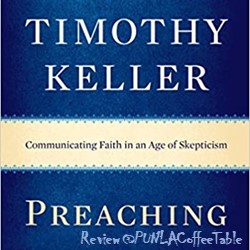(written by Dr. Kip Wehrman 06/15/2023)
Episode 23V11 – Social Church (Book Review)
Hello my friends. Thanks for joining me today for an @ the PUNLA coffee table. I would like to share with you an article I read by Justin Wise “The Social Church: A Theology of Digital Communication”. I to share this with you as a potential resource that at least some of you might be interested in.
Okay the book is titled “The Social Church: A Theology of Digital Communication” by Justin Wise. In the introduction, Wise defines his book as, “What’s needed now in the church is not “how to,” but “where to.” There is a significant gap between knowledge and application in the body of Christ surrounding social media. We’re like a dog that’s finally caught up to the car he’s been chasing, then looks around quite listlessly asking the question, “Now what?” Wise also clearly states that the reader will need to fill the void between “know-how” and “do-now.” Social media has caused every societal building block to adapt and so must the church.
Section 1: the Why of Social Media
Chapter 1 is titled “Heretics Needed: Apply Within.” Wise begins this chapter with a look at the 2009 Cultivate Conference. He includes a discussion about Martin Luther, subtitled “Tuesday with Marty.” Wise lays out how new technology, the printing press, was integral to the efforts of Luther. Wise then asks the reader, what would Luther do? Wise parallels the things accomplished by Luther through technology. He proposes that for the church to become a Social Church, it needs leaders willing to be heretics. However , Wise is not speaking of theological heretics but ones willing to challenge the long-standing and beloved methods of communicating.
Chapter 2 is titled “Calculated Rule-Breaking.” Wise discussing his own personal experience with Church leadership resisting change. There are unwritten rules about how ministry is done and not done. Moving a ministry into social media can appear to be breaking those rules. Wise promotes a “real ministry in the risk.” Traditional church communication has been more like a one way road with postcards, bulletins, announcements, etc. Social media makes ministry dynamic and a two way street. Wise says, “The point is simple: churches need leaders who will take a risk and break the stranglehold of this is how it’s always been.”
Chapter 3 is titled “Cave Walls, Martians, and the History of Communication.” Wise describes what he calls the power of broadcast. A single message now has the potential to millions beyond the walls of the church. Luther once stated, “simul justus el peccator,” both sinner and saint all in the same being. Technology is amoral, neither inherently bad nor good. Communication technology can be used to the benefit of the ministry. Wise cautions that, “The technology we create can be used for good and for evil. That which we create to serve us ends up ruling us. This has never been truer than in the case of broadcast technology.” Wise discusses the demise of the broadcast era and the beginning of the www. In the past people of faith have been at the forefront of every major communication shift. From the book, printing press, radio and TV to the new frontier of social media. People of faith must seize the opportunity to communicate in diverse ways that has been placed in front of them for the sake of the kingdom.
Section 2: The Embedded Values of a New Media Culture
Chapter 4 is titled “Signs of the Times.” Wise explains that streaming live events is now commonplace, but in 2008 it was a relatively new idea. During this period Wise was challenged to become a visionary leader in the field of digital ministry. A seminary instructor Cynthia discussed the generational media values; interactivity, sharing, personalization, ubiquity, and connectedness. Wise then uses illustrations to demonstrate his points.
Chapter 5 is titled “Value 1: Looking for a Mouse.” In one part of this chapter Wise talks about the great twitter experiment conducted by Mickey Mellen which demonstrated how few churches actually had a social media presence. Wise admonished us that we serve an interactive God and that we should be cultivating how relational the Bible is. Wise says that God is interactive so why shouldn’t our ministries be spiritually interactive in the digital age. The interactive church goes into the nooks and crannies of the web. Wise continues these themes with “What’s love got to do with it?”, “Smoke signals and theology,” “Barth and digital natives,” and “The cresting wave of leadership transition.” All these themes show the timeless principles that transcend cultural trends and ways we should be engaging with our ministries.
Chapter 6 is titled “Value 2: It’s Mine and It’s about Me.” In this chapter Wise discusses the selfish nature of people in our hyper-personalized era. He discusses how people perceive that they should be able to personalize church as well. Beyond the fears of this, Wise sees how personalization can allow people to fully express the work of God in their lives.
Chapter 7 is titled “Value 3: The Fading Line between Online and Offline.” Wise describes the birth of real-time media, how technology has become embedded in nearly every facet of society. The desire for real-time connection has changed priority all over the world. In places like Africa where clean drinking water is a problem, villagers crowd around batteries to charge their cellular phones. Wise ends this chapter by discussing how relational connections are becoming primarily online with the rise of social media.
Chapter 8 is titled “Value 4: Life Amplification.” This chapter deals with the idea of informing which is becoming your own self-directed, self-empowered researcher, editor and selector of entertainment and news. Wise explains the importance of sharing through the use of technology to engage the world. He describes a “digital kimono” which is an idea of embracing and adopting the new ways of communicating instead of stubbornly holding on to the old established ways.
Chapter 9 is titled “The Medium is the Message (and the Message Doesn’t Change).” Wise says that the statement the medium is the messages sounds insane, but “it’s really not what you say, it’s how you say it.” Wise continues this chapter with themes of “being in church vs. watching church,” “Brief bites’ like twitter etc., “Created to communicate,” and “Jesus’ medium: the tangible Christ.” Wise end this chapter by saying, “It is time to grasp what an embodied gospel looks like in a digital world. We must adapt our methods without changing the message.”
Section 3: To Whom Shall We Go?
Chapter 10 is titled “Pyramids Aren’t just in Egypt.” Wise discusses Jesus’ big idea. Wise expands with the model Jesus invented; 1) Is your big idea simple?, 2) Is your big idea absurd?, and 3) Does it get people to ask questions? Wise explains why communicating your big idea matters. Then Wise provides some guidance on a starting point for your big idea, building on your big idea, and building on top of your big idea with both website and social media strategies.
Chapter 11 is titled “Washing Feet.” Wise cautions us about setting social media limits. He says, “It is here where I believe the church has a unique opportunity to lead people to a place of stillness and relearning how to connect with our Maker. If we’re willing, we can lead the conversation and model how to have a healthy relationship with the technology we’ve created.” However, Wise admonishes the readers to the risks of social media only ministry with the statement, “It’s hard to wash feet over social media.”
Chapter 12 is titled “Navigating the Generational Digital Divide.” In this chapter Wise discusses the ever widening digital generational divide and the generational tug-of war that results. Wise stresses that we all want the same thing and the universal church, and the local church need to unite to spread the gospel by various means. In this new approach there will be digital natives and digital immigrants, and our ministries should have passion for both. Wise cautioned both parties from judging each other. The older leaders should not feel threatened by the new methods and technology and the younger need to resist abandoning all that came before.
Chapter 13 is titled “Chipping Away the Layers.” Wise begins this chapter with a quote from Gary Hamel, “Religion won’t regain its relevance until church leaders’ chip off these calcified layers, rediscover their sense of mission, and set themselves free to reinvent “church” for a new age.” Wise discusses how the old denominational structures need to become more flexible to the culture, if they are going to do the work of the church outside its four walls.
Chapter 14 is titled “88 MPH.” The title for this last chapter is a reference to the “Back to the Future” movies. Wise point with the reference is to ask the question, “what if?” Wise says that when we look at the life of the church, he believes we are facing the question of “what if?” Right here and right now. In many ways, it is unavoidable, engaging in technology has become a necessity. This leaves the church to ask two questions. “What if we try something new? What if we keep doing the way we have always done them?” Avoiding the question is not an option. Wise finishes the book by admonishing the church to learn social media in the same way people of faith once learned to use the telephone, copy machine, or pen and paper. Churches must lay out a path for leveraging social media technology for the sake of the building the God’s kingdom.
I personally really like Wise’s book. If you are looking for a book that gives some practical advice and encouragement to getting into social media for ministry. Everything can be used for the purposes of God. We as God’s people need to get to it.


